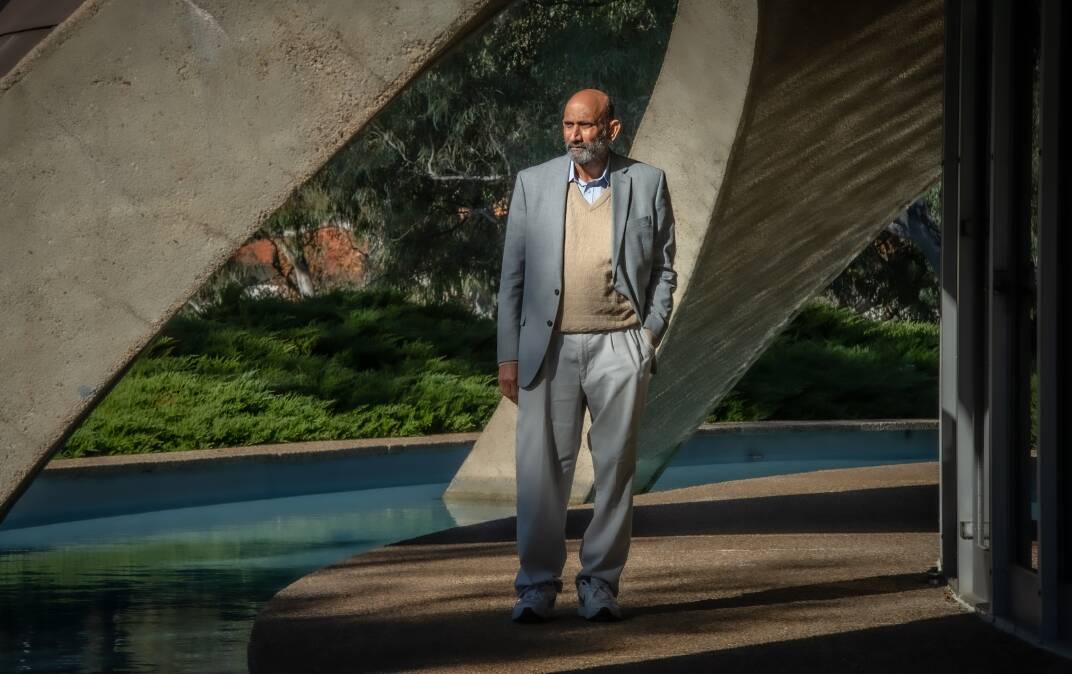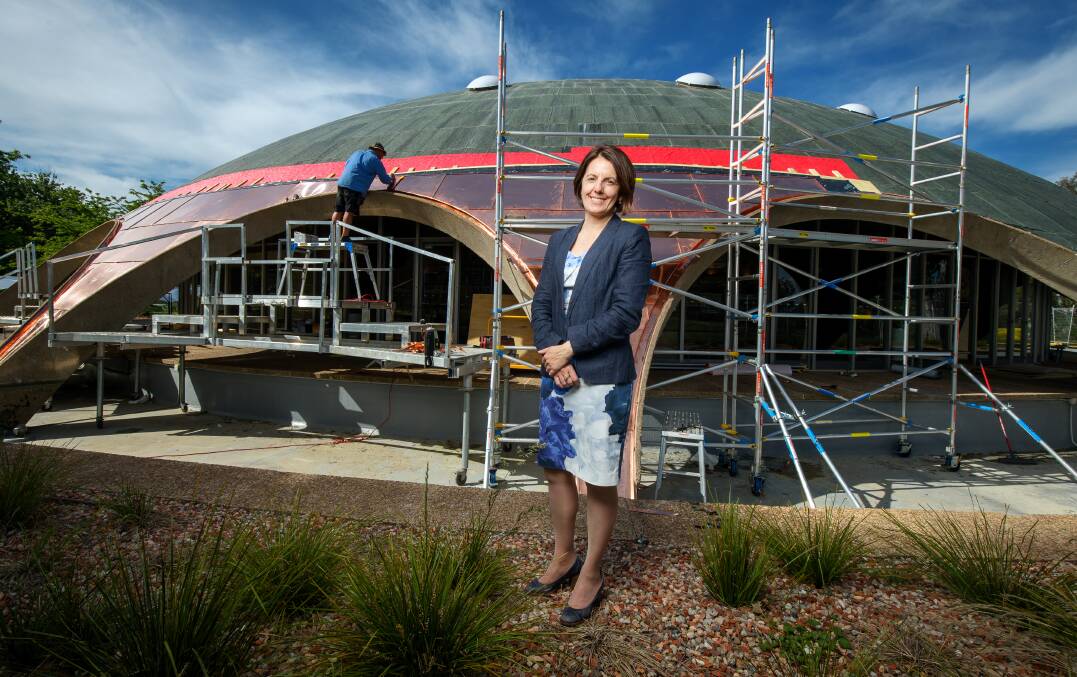One of Canberra's best known buildings is about to reopen.
More than two years after the iconic copper roof of the Shine Dome was dented to destruction by the big hail storm, the building is back in public use for weddings and conferences.
In January 2020, hail stones the size of cricket balls smashed into the roof and the sky-lights.
Water poured into the innovative building, which is the largest dome in Australia that isn't supported by internal pillars. At 47.4 metres across, it's bigger in diameter than many other free-standing domes, including St Paul's Cathedral in London (31 metres in diameter) and St Peter's Basilica in Rome (41.5 metres).
As the storm raged, a heroic effort by staff saved some of the most important papers in world science.
With water pouring in, boxes containing original notes written by some of the world's most important scientists were ferried to safety. The saved papers included those of Frank Fenner whose work led to the eradication of smallpox, and Gordon Leslie Ada who did much to understand influenza.

The staff of the Australian Academy of Science, in their high-heels, socks and stockings, formed a human chain to ferry the boxes from the library to a safe, dry place.
"It was an absolutely frightening situation," the chief executive of the Australian Academy of Science, Anna-Maria Arabia, said at the time.
The staff had heard the glass above shattering as every sky-light in the dome cracked and water started pouring in.

The copper roof has had to be replaced at a cost of $2 million.
The new one is much brighter than the old one, but that's because copper gradually turns green as it reacts with water and the atmosphere.
When it was built in the late 1950s, a water sprinkler was placed on top to help the copper-coated roof oxidise and change colour to the duller colour we knew until the hail struck and it had to be re-covered.
By the way, the building is called the Shine Dome not because it shines in any way.
It was renamed the Shine Dome in 2000 to honour biochemist Professor John Shine who donated a million dollars towards the building's refurbishment. It's had several official names. It was initially the Academy Building (1959 -1961) and then Becker House until 2001.
It's also had unofficial names, including the Igloo, the Mushroom, and the Martian Embassy.
The President of the Australian Academy of Science, Professor Chennupati Jagadish, said: "Our staff are all excited to get back into the Shine Dome and be able to do their work."
The Academy has launched an appeal for funds, partly to help it digitise the documents threatened by water damage two years ago. "They are highly valuable for the nation," Professor Jagadish said.
And, by the way, the Academy of Science has explained with copper turns green on old roofs: "That's due to patina.
"A patina finish is a surface change that has grown more beautiful with age (something many of us strive to do). Scientifically speaking, patina is the green or brown film that forms naturally on the surface of copper due to a series of chemical reactions.
"Copper forms a patina when exposed to oxygen and weathering over time. You will see this change in colour on old roofing, copper statues and on the roof of the Shine Dome at the Australian Academy of Science."







